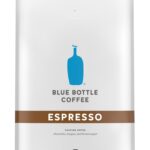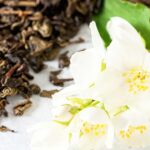In teh realm of coffee brewing, few methods capture the creativity quite like the pour-over technique. Among the myriad of tools available to the home barista, the Fellow Stagg EKG electric kettle stands out as a beacon of precision and innovation. With its sleek design and advanced temperature control capabilities,the Stagg EKG is not just a kettle; it’s a gateway to mastering the art of the perfect cup. This article will explore the intricacies of the Fellow Stagg EKG pouring technique, guiding readers through the essential steps to achieve a pour-over that balances flavor, aroma, and aesthetics.Whether you’re a seasoned coffee connoisseur or a curious novice, join us on this journey to elevate your brewing skills and savor the rich tapestry of flavors that only a meticulously crafted pour-over can deliver.
Understanding the Fellow Stagg EKG Precision Temperature Control
The Fellow Stagg EKG precision temperature control is a groundbreaking feature that elevates the experience of brewing pour-over coffee. with a sleek design, it allows users to tailor their brewing temperature with unmatched accuracy. The intuitive interface makes it easy to set your desired temperature, ensuring that each cup of coffee is brewed to perfection. Here are some highlights of this technology:
- precision Brew Settings: Adjust temperatures between 135°F and 212°F for optimal extraction.
- Real-time Temperature Display: Keep an eye on your water temperature as it heats, ensuring it stays consistent.
- Hold Function: Maintain temperature for up to 60 minutes, allowing for a leisurely brew without losing heat.
this unique design ensures that every aspect of the brewing process is controlled, contributing to the sweet spot where flavor and aroma harmoniously meet. The kettle also features a precision pour spout that allows for a steady, controlled flow of water, which is crucial when extracting the perfect flavor profile from your coffee grounds. Below is a comparison of key features that set it apart from traditional kettles:
| feature | Fellow Stagg EKG | Traditional Kettle |
|---|---|---|
| Temperature control | ±1°F Accuracy | Manual Adjustment |
| Heating speed | Rapid Heating | Varies by Model |
| Design | Ergonomic and Stylish | Basic and Functional |

Crafting the Ideal Coffee-to-water Ratio for Balanced Brews
Achieving the ideal coffee-to-water ratio is crucial in brewing the perfect pour-over. A well-balanced cup requires a calculated amount of coffee grounds relative to the water used, leading to optimal extraction and flavor development. Generally,a 1:15 to 1:17 ratio is recommended,which translates to approximately 1 gram of coffee for every 15 to 17 grams of water. This ratio not only enhances the taste but also ensures that neither the coffee nor the water overpowers each other. Here’s a quick guide to help visualize the ratios:
| Coffee (grams) | water (grams) | Ratio |
|---|---|---|
| 15 | 225 | 1:15 |
| 15 | 255 | 1:17 |
| 20 | 300 | 1:15 |
| 20 | 340 | 1:17 |
Moreover, personal preference plays a significant role in determining the perfect ratio. If you’re after a bolder coffee experience, consider leaning towards the 1:15 ratio; whereas the 1:17 ratio might yield a smoother, more nuanced flavor profile. Remember to measure your coffee and water accurately for consistency. experimenting with different ratios can elevate your pour-over skills, allowing you to discover unique taste profiles that cater to your palate.Don’t forget to take notes on your experiments to refine your technique further and develop your coffee expertise.

Techniques for Optimizing Water Flow and Pouring Patterns
To achieve the ideal pour-over coffee using the Fellow Stagg EKG, mastering water flow and pouring patterns is essential. Begin by experimenting with the goose-neck spout,which allows for precision and control over the water distribution. Aim for a consistent water flow by adjusting your grip on the handle and tilting the kettle to find the sweet spot where water cascades gracefully without splashing or over-saturating the grounds. Here are a few techniques to incorporate:
- Circular Motion: Pour in a circular pattern to ensure even saturation of the coffee bed.
- Blooming: Start with a small amount of water to let the coffee bloom, releasing trapped gases before adding more water.
- Timed Pours: Monitor your pour timing to control the extraction rate—aim for a total brew time of around 3 to 4 minutes.
Another aspect to consider is the pouring height, which greatly influences the water’s impact on the coffee grounds. Pouring from a higher position can create a dynamic interaction with the ground coffee, enhancing extraction, but be careful to avoid splashing. Below is a comparison table that showcases various pouring heights and their effects:
| Pour Height | Effect |
|---|---|
| Low (1-2 inches) | Gentle saturation, less agitation. |
| Medium (3-5 inches) | Balanced extraction and saturation. |
| High (6 inches and above) | Increased agitation, quicker extraction. |

Troubleshooting common Pour-Over Challenges with Fellow Stagg EKG
even the most seasoned pour-over aficionados encounter challenges when using the Fellow Stagg EKG kettle.Here are some common problems and their solutions to help you enhance your brewing experience:
- Inconsistent Water Temperature: Always check that you’re setting the desired temperature accurately. If your kettle is responding slowly, consider recalibrating its temperature settings.
- Poor Pour Control: The design of the Stagg EKG allows for precise pouring, but if you’re finding it difficult, try adjusting your grip or practise using a slower, steadier motion.
- Uneven Extraction: If you notice certain parts of the coffee bed are over-extracted and others under-extracted, focus on the angle and height of your pour. Maintaining a consistent distance can definitely help achieve an even saturation.
If you’re facing a particular complication with your pour-over, here’s a quick troubleshooting table to guide you:
| Issue | Possible cause | Solution |
|---|---|---|
| too fast Extraction | Grind size too coarse | Try a finer grind |
| Too Slow extraction | grind size too fine | Adjust to a coarser setting |
| Weak Coffee | Insufficient coffee dosage | Add more coffee to your brew |
| Bitterness | Over-extraction | Shorten brew time or adjust pour technique |
To Conclude
As we conclude our exploration of the Fellow Stagg EKG pouring technique, it’s clear that mastering the art of the perfect pour-over is not merely about the equipment or the method; it’s an enchanting dance of precision, timing, and personal expression. Each coffee session becomes an opportunity to engage with your chosen beans, extracting the unique flavors and aromas that they offer. By refining your pouring skills and understanding the science behind water temperature and flow, you elevate your brewing ritual to an art form, creating not just a beverage, but an experience.
So, whether you’re a seasoned barista or a curious novice, embrace the journey ahead. Practice the techniques discussed,experiment with different variables,and allow your palate to guide you. With every pour, you’re not just making coffee; you’re crafting a moment of joy that connects you to the wider world of coffee enthusiasts. Remember, the perfect pour-over is a celebration—of flavor, technique, and your personal coffee journey. Happy brewing!



